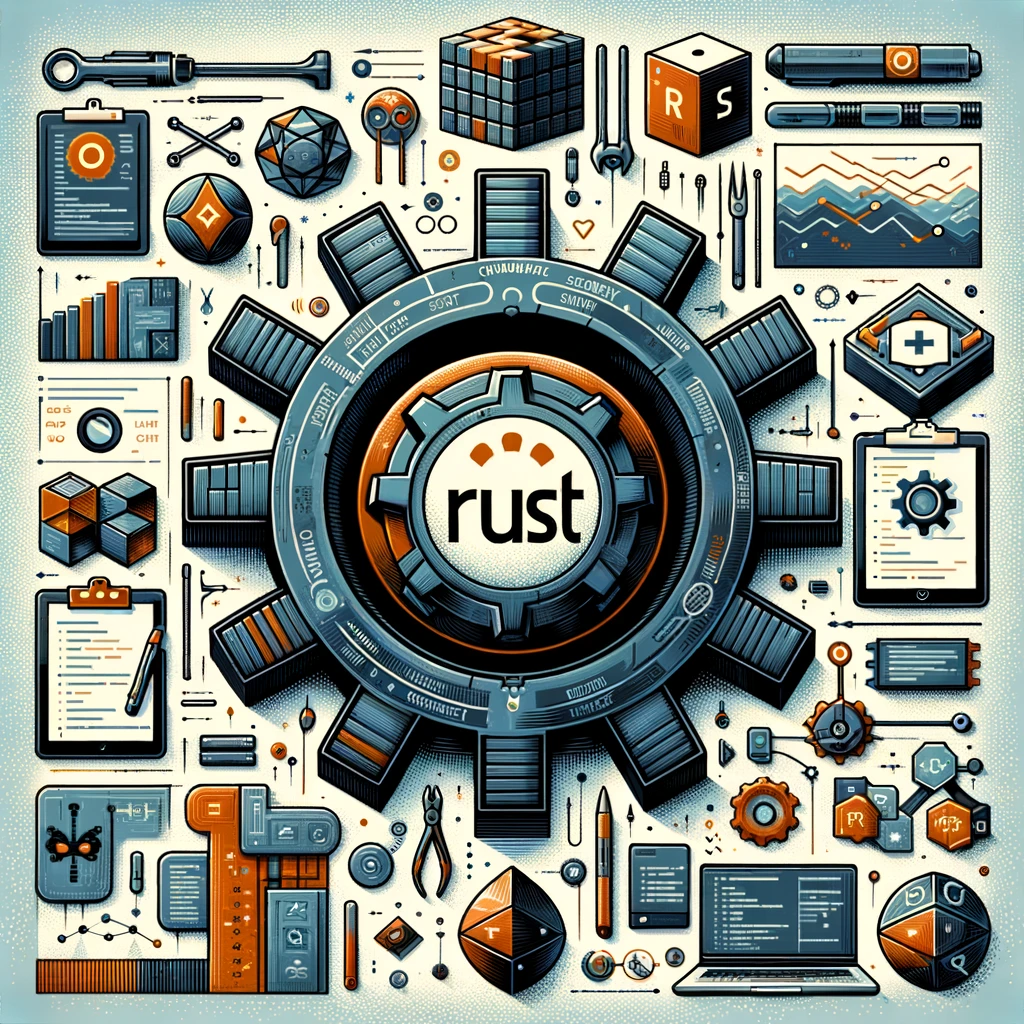Rust in Finance
 Atharva Pandey
Atharva Pandey
As I ventured deeper into the Rust ecosystem, I set my sights on a project that would not only challenge my technical acumen but also push the boundaries of software architecture — a high-frequency trading (HFT) platform. In the high-stakes world of high-frequency trading (HFT), where milliseconds can mean millions, the quest for the ultimate trading platform is relentless. With its relentless demand for speed, low latency and reliability, served as the perfect proving ground for my exploration into Rust’s capabilities and the architectural paradigms that would best harness them.
Inspiration and Architectural Vision
The genesis of this project was fueled by my exploration of various open-source projects, each presenting unique solutions to complex problems. The intricate nature of HFT, with its critical need for speed and precision, presented an ideal canvas to apply my learnings. My aim was to architect a system that not only leveraged Rust’s robust performance capabilities but also embodied adaptability and scalability at its core.
Why Rust?
Unmatched performance: Rust’s zero-cost abstractions ensure maximum efficiency.
Memory safety: Rust’s ownership model eliminates common bugs at compile time.
Concurrency: Rust’s safe concurrency enables high-speed, parallel data processing.
Architectural Blueprint
hft_platform/
├── Cargo.toml
├── src/
│ ├── main.rs # Orchestrates service initialization and event bus setup
│ ├── services/ # Business-centric service modules
│ │ ├── order_management/ # Handles order operations, emitting and listening to events
│ │ │ ├── domain/ # Domain models and rules, ensuring business logic integrity
│ │ │ ├── application/ # Bridges domain logic with infrastructure
│ │ │ └── infrastructure/ # Manages external interfaces like database and API clients
│ │ ├── market_data/ # Manages market data ingestion and analysis
│ │ └── risk_management/ # Performs risk evaluation and management
| ├── shared/
| │. ├── infrastructure/ # Shared infrastructure used by all services
│. │. ├── utils/ # Shared utility like eg:logs, tracing etc.
|. │ └── mod.rs
│ ├── event_bus/ # Facilitates asynchronous inter-service communication
│ │ └── mod.rs # Handles event publishing and subscription
│ └── api_gateway/ # Central entry point for external API requests
│ └── mod.rs # Directs requests to relevant services
├── tests/
│ └── integration_tests.rs # Ensures service interoperability and system integrity
└── README.md
Core Architecture Components
Service Modules: Define clear, business-centric services (e.g., Order Management, Market Data Analysis) that are self-contained and loosely coupled, focusing on simplicity and singular responsibility.
Event Bus: Implement a central event bus that facilitates asynchronous communication between services, reducing tight coupling and enabling scalable, real-time data processing.
Domain Models: Within each service, apply Clean Architecture principles to separate domain models (business entities and rules) from application logic and infrastructure concerns, ensuring clarity and maintainability.
API Gateway: Use an API gateway as the entry point for the frontend, simplifying client interactions and routing to appropriate services.
Detailed Comparison with Clean Architecture
When I reflect on my architectural choices, I find it enlightening to draw comparisons with established paradigms such as Uncle Bob’s Clean Architecture. Here’s a detailed look at how my approach aligns with and diverges from this renowned architecture:
Separation of Concerns
Clean Architecture: Emphasizes a strict separation into layers (Entities, Use Cases, Interface Adapters, and Frameworks & Drivers), with dependencies pointing inward.
My Approach: Focuses on business-centric services, promoting modularity but with a more fluid boundary, facilitated by an event bus for inter-service communication.
Domain Centricity
Clean Architecture: The domain and use cases form the core, insulated from external changes.
My Approach: Each service houses its domain logic but is designed to interact fluidly through events, maintaining domain integrity while allowing for dynamic interactions.
Infrastructure Independence
Clean Architecture: External interfaces and frameworks are relegated to the outermost layer, ensuring the core logic’s independence.
My Approach: Services are designed to be infrastructure-agnostic, with
infrastructure/submodules handling external interactions, echoing Clean Architecture's principles but within a service-oriented context.
Scalability
Clean Architecture: Scalability is achievable within layers but can be constrained by the layered model in distributed systems.
My Approach: The service-oriented and event-driven nature inherently supports scalability, allowing individual components to scale based on demand.
Adaptability to Change
Clean Architecture: Offers a degree of adaptability through its strict layering, ensuring that changes in external frameworks or UI have minimal impact on the core business logic.
My Approach: Emphasizes adaptability by structuring the system around loosely coupled, business-centric services. This modular design allows for individual components to evolve independently, facilitating easier adoption of new technologies or trading strategies.
Complexity Management
Clean Architecture: Can become complex due to the number of layers and strict adherence to dependency rules.
My Approach: Aims to simplify by organizing around business capabilities and using events for loose coupling, though it introduces its complexities in managing distributed systems.
Addressing Potential Challenges
Complexity in Distributed Systems
The modular and distributed nature of the architecture introduces its own set of complexities, particularly in ensuring consistent state management and efficient communication between services.
Potential Solutions:
Service Mesh: Implementing a service mesh can abstract the complexity of inter-service communications, providing robust features like service discovery, load balancing, and secure communication.
State Management: Adopting event sourcing and CQRS (Command Query Responsibility Segregation) patterns can help maintain consistency across distributed services by separating the write and read models and ensuring that all state changes are captured as a sequence of events.
Event Bus Overhead
The reliance on an event bus for inter-service communication could introduce latency and become a bottleneck as the system scales.
Potential Solutions:
High-Performance Messaging Systems: Utilizing high-throughput, low-latency messaging systems like Apache Kafka can mitigate the potential overhead introduced by the event bus.
Event Bus Optimization: Regularly monitoring and optimizing the event bus’s performance, including tuning message serialization and deserialization processes and optimizing network configurations, can help maintain the system’s responsiveness.
Conclusion
The journey to architecting an HFT platform in Rust has been a profound exploration of balancing the cutting-edge performance of Rust with architectural patterns that prioritize adaptability and scalability. This project has not only honed my skills in Rust but has also illuminated the path to designing systems that are built to evolve, adapt, and scale in the face of the ever-changing technological and financial landscapes. Through this endeavor, the architecture that emerged stands as a testament to the synergy between modern software principles and the unparalleled capabilities of Rust, setting a new benchmark for building high-performance, adaptable systems in the world of finance.
Subscribe to my newsletter
Read articles from Atharva Pandey directly inside your inbox. Subscribe to the newsletter, and don't miss out.
Written by
